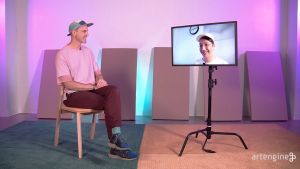
Interface: Art + Stability
What is software without hardware? Join us as DEL participant, artist and National Director of the Independent Media Arts Alliance Emmanuel Madan shares his vision for the viability of the Arts ecosystem and what role a union, Artwork_Local404, could play within that system. In this conversation, we discuss the importance of language, authorship, and time when it comes to the development of meaningful work (tools, platforms, initiatives and art).
